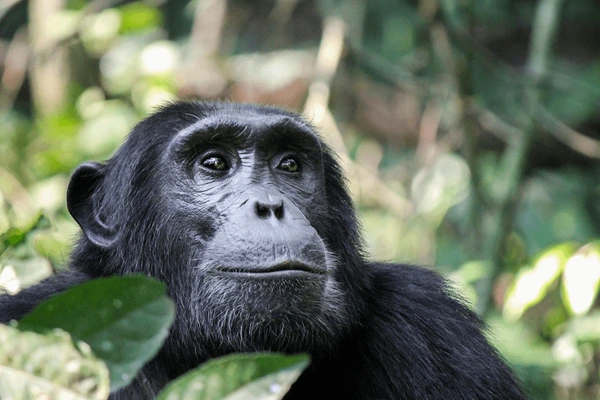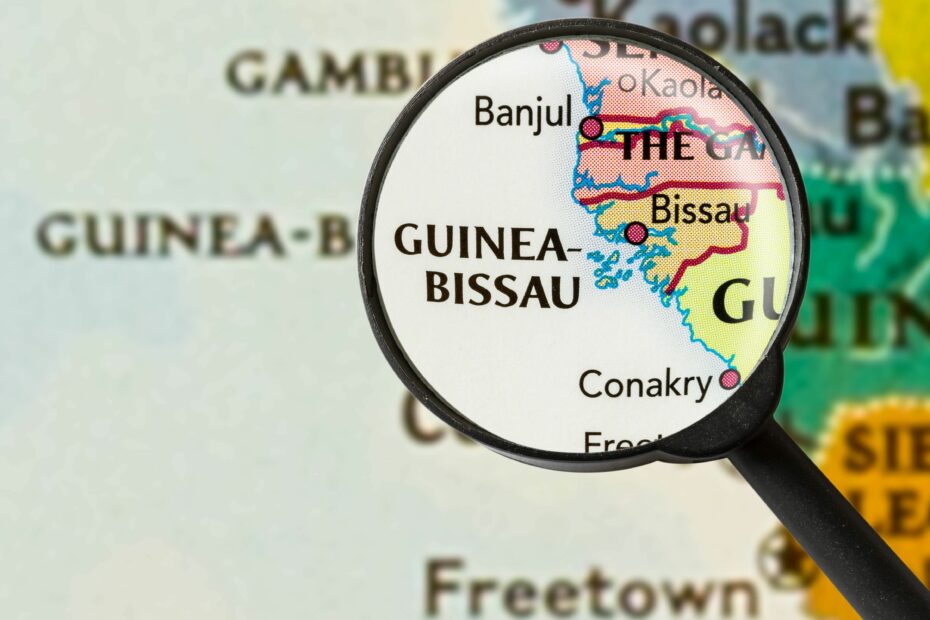Tucked away on the West African coast lies Guinea-Bissau, a nation radiating with cultural diversity and rich history. Known for its vibrant music, delicious cuisine, and awe-inspiring landscapes, Guinea-Bissau is much more than meets the eye. Despite the challenges this nation has faced, its resilience and spirit continue to inspire. Let’s explore the facets of this remarkable country, from its people to its traditions, offering an in-depth look into what makes Guinea-Bissau stand out on the map of Africa.
Geography and Climate
Guinea-Bissau is characterized by its diverse geography, stretching from the arid savannah in the North-East, and lush rainforest in the South-East, to the sandy beaches and mangrove-lined swamps of its Atlantic coastline. The country is largely flat, with the highest point, Loura, reaching just 262 meters above sea level. The archipelago of Bijagos, a UNESCO Biosphere Reserve, adds to the country’s ecological diversity with its unique blend of marine, wetland, and terrestrial environments.
The climate of Guinea-Bissau is tropical, characterized by a wet season from June to November and a dry season from December to May. The coastal regions experience higher rainfall, whereas the inland areas have a more arid climate. The average temperature hovers around 26.3°C, providing a warm, tropical climate year-round.

History
The history of Guinea-Bissau is marked by cultural exchange, conflict, and resilience. Early inhabitants of the region include the Guinean people, who were later joined and influenced by various African and Berber tribes. The 15th century marked the arrival of the Portuguese, initiating a period of colonization that would last for centuries. During the colonial period, Guinea-Bissau was utilized primarily as a hub for the trans-Atlantic slave trade, significantly impacting the country’s demographic and cultural landscape.
Guinea-Bissau’s fight for independence began in earnest in 1956 with the formation of the African Party for the Independence of Guinea and Cape Verde (PAIGC) by Amilcar Cabral and Rafael Barbosa. The PAIGC waged a guerrilla war against the Portuguese which eventually led to de facto independence in 1973, officially recognized by Portugal on September 10, 1974. Read Also: Cabo Verde (Cape Verde): Geography, History and Culture
However, post-independence Guinea-Bissau faced a host of challenges including political instability, military coups, and civil war. Today, the country is striving to strengthen its democratic institutions, improve civil liberties, and bolster its economy. These efforts signify Guinea-Bissau’s ongoing journey towards stability and prosperity. Despite a turbulent past, the spirit of resilience continues to define the people of Guinea-Bissau as they navigate their future.

Population and Culture
With a population of approximately 2.2 million people, the culture of Guinea-Bissau is a vibrant mix of African, Portuguese, and Brazilian influences, reflecting the country’s rich history and diverse population. Ethnic groups such as the Balanta, Fula, and Manjaco each contribute distinct languages, customs, and traditions to the cultural mosaic of Guinea-Bissau.
Traditional music, such as Gumbe, and dance play an important role in social gatherings and celebrations. Unique cultural practices like the ‘Mask Dance‘ and elaborate ceremonies convey a sense of identity and community among these groups. The country is also famous for its carnival, a joyous event filled with colorful costumes, dancing, and music, which showcases the rich cultural diversity of the country.
People from Guinea-Bissau express art in a variety of forms, including intricate weaving, pottery, and wooden sculptures. Masks and statues, often made for traditional ceremonies, represent a significant aspect of the local artistry. Despite the challenges the country faces, the traditions and culture of Guinea-Bissau remain a cherished cornerstone of national identity and pride.
Food and Cuisine
The cuisine of Guinea-Bissau is a blend of West African and Portuguese flavors, reflecting the country’s historical and cultural ties. Rice and fish, caught from the Atlantic Ocean or sourced from local rivers, form the backbone of many meals. A typical dish is `Caldo`, a hearty fish stew flavored with tomatoes, onions, and Okra, usually served over rice.

Made with corn, beans, and meat or fish, ‘Cachupa‘ is a staple that brings together flavors reflecting both African and Portuguese influences. `Jollof rice`, another popular West African dish of spicy rice cooked with vegetables and sometimes meat or fish, also has a special place in the culinary repertoire of Guinea-Bissau. The use of local ingredients such as palm oil, cassava, yams, and tropical fruits adds color and flavor to the dishes. Read Also: Major African lakes: Exploring the 7 biggest lakes in Africa
Street food is a significant part of the country’s food culture, with `Pão de Rolo`, a rolled bread filled with various fillings, being a popular choice. Peanuts are also extensively used, either as a snack, in sauces or ground into flour to make a type of bread called `Bolo de Cus-cus`. The Portuguese influence is evident in dishes such as `Camarão Grelhado`, grilled shrimp in piri piri sauce, and `Pastéis de Nata`, Portuguese egg tart pastries.
Tourist Attractions
Guinea-Bissau offers different tourist attractions showcasing its natural beauty, cultural heritage, and historical landmarks. The Bijagós Archipelago, a UNESCO Biosphere Reserve, is a must-visit locale. Comprising 88 islands, only 20 of which are inhabited, the archipelago is renowned for its diverse ecosystems, pristine beaches, and clear waters, making it a paradise for nature lovers, bird watchers, and scuba diving enthusiasts.
The capital city of Bissau provides a glimpse into the country’s colonial past with its Portuguese-era architecture. The Bissau French Cultural Centre and National Ethnographic Museum offer interesting insights into the country’s history and culture.

For wildlife enthusiasts, the Cantanhez Natural Park and Orango National Park are perfect places to visit. Home to a variety of wildlife including chimpanzees, hippos, and diverse bird species, these parks allow visitors to experience the country’s rich biodiversity.
Another notable tourist spot is the city of Bolama, the former capital of Portuguese Guinea. Its colonial buildings and peaceful atmosphere provide a unique contrast to the bustling city life of Bissau. Whether it’s the rhythm of traditional music, the allure of historical landmarks, or the natural beauty, Guinea-Bissau offers distinct experiences for every traveler.
Economy
Similar to other African countries, the economy of Guinea-Bissau is largely agrarian and dependent on subsistence farming and fishing. The country’s primary cash crop is cashews, which account for over 80% of export earnings and employ a significant percentage of the labor force. Despite its economic potential, the country faces several challenges including political instability, lack of infrastructure, and a high dependence on foreign aid.
Unfortunately, the country holds the status of being one of the poorest in the world, with a significant portion of the population residing below the poverty line. However, there have been efforts to diversify the economy and promote sectors such as tourism and mining. Guinea-Bissau is rich in untapped natural resources, including bauxite, phosphates, and offshore oil, which, if properly managed, could be a significant source of revenue. These sectors present opportunities for economic growth and development if the country can overcome its structural challenges.
Historical Landmarks
Historical landmarks like the Fortaleza de São José da Amura, which houses the tomb of Amílcar Cabral, provide insightful glimpses into the past. Cabral, a national hero, played a significant role in Guinea-Bissau’s fight for independence and remains a revered figure in the country.
The National Heroes Memorial houses the remains of other prominent figures who fought for independence, including Domingos Ramos, Francisco Mendes, and Rafael Barbosa. These landmarks serve as important reminders of the struggles that shaped the nation and honor the sacrifices of those who fought for freedom.
The ruins of Cufar, a former slave trade center, also offer a poignant glimpse into the country’s dark history. The site serves as a reminder of the atrocities committed during the transatlantic slave trade and stands as a symbol of resilience and strength in the face of adversity.
Other notable historical landmarks include Bissau Velho, the oldest part of Bissau city, and Fortaleza de Cacheu, a former Portuguese fort that played a significant role in the slave trade. These landmarks provide valuable insights into the country’s past and cultural heritage.



